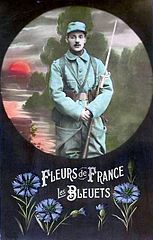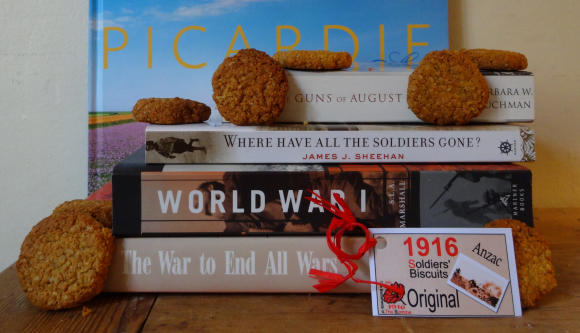
Paris, November 11—Last week French President Francois Hollande gave a speech launching the centennial commemorations of the First World War and the 70th anniversary of the Liberation of France during the Second World War. Also last week, as part of my ongoing WWI education, I visited several war sites, monuments and museums in Picardy, just north of the Paris region, and also spoke with a cultural officer from Strasbourg about the WWI archives in Alsace, a German province at the time.
Meanwhile, I’ve been working, if such be called work, on France Revisited’s Pastry Issue, which involves tasting cupcakes, trying the new blackcurrant-flavored mont blanc made in honor of the 110th anniversary of the venerable tea room Angelina, and meeting several bakers.
Thinking about war tourism and commemorative travel on the one hand and about pastry tourism and yummy travels on the other may sound a bit schizophrenic, but tourism and travel present us with the wonderful challenge of enjoying the ridiculous within the sublime, the sublime within the solemn, the contemporary within the historical, the economics within the culture, and vice versa. And anyway you’ve got to eat and drink along the way, so why not enjoy.
Actually, juggling thoughts of sweets and war it isn’t so schizophrenic after all since they led me to ANZAC biscuits, which are well known to Australians and New Zealanders but new to me.
ANZAC stands for Australian and New Zealand Army Corps. ANZAC biscuits are oatmeal biscuits that were sent to soldier from down under during the Great War.
 I brought back a pack of ANZAC biscuits from my visit to Picardy last week and opened it today to raise a morning toast, so to speak, to veterans and fallen soldiers (and to share with a Brazilian neighbor). The Australian War Memorial provides a recipe. They were better than I expected—quite good company with tea (as is the Brazilian neighbor and her dog)—nothing I’d dive into a trench for but a nice bite of history on Veterans/Remembrance/Armistice Day. The AWM site notes that early recipes for the biscuits didn’t include coconut. You’ll also see there a recipe for ANZAC tiles or wafers, a long shelf-life substitute for bread that was also shipped to soldiers.
I brought back a pack of ANZAC biscuits from my visit to Picardy last week and opened it today to raise a morning toast, so to speak, to veterans and fallen soldiers (and to share with a Brazilian neighbor). The Australian War Memorial provides a recipe. They were better than I expected—quite good company with tea (as is the Brazilian neighbor and her dog)—nothing I’d dive into a trench for but a nice bite of history on Veterans/Remembrance/Armistice Day. The AWM site notes that early recipes for the biscuits didn’t include coconut. You’ll also see there a recipe for ANZAC tiles or wafers, a long shelf-life substitute for bread that was also shipped to soldiers.
Those visiting northern France may find them in bakeries and shops frequented by tourists near WWI sites and museums, possibly alongside poppy-flavored goods, such as poppy-flavored jelly and syrup. Though those aren’t wartime products (and in any case are mostly sugar), they recall the significance of the poppy (le coquelicot) as a symbol of the fallen of nations of the British Empire/Commonwealth ever since the publication in 1915 of John McCrae’s poem “In Flanders Fields” (1915): “In Flanders fields the poppies blow/Between the crosses, row on row…” The poppy’s significance stems from its being the only plant that grew in the traumatized soil of the battlefields of France and Belgium.
 At least that’s how the British saw it. The French also noticed the cornflowers (les bleuets). Bleuet was also the nickname given to the young soldiers who arrived after the start of the war in new blue uniforms. (The old uniforms, still worn at the start of the war but too flashy for a modern battlefield, had red pants.) Thus, President Hollande wore a cornflower on his lapel today as he laid a wreath at the Arc de Triomphe, site of France’s Tomb of the Unknown Soldier.
At least that’s how the British saw it. The French also noticed the cornflowers (les bleuets). Bleuet was also the nickname given to the young soldiers who arrived after the start of the war in new blue uniforms. (The old uniforms, still worn at the start of the war but too flashy for a modern battlefield, had red pants.) Thus, President Hollande wore a cornflower on his lapel today as he laid a wreath at the Arc de Triomphe, site of France’s Tomb of the Unknown Soldier.
* * *
For general tourist information about touring WWI sites, museums and monuments in the department of Somme, see the official Somme tourist site.
© 2013, Gary Lee Kraut


